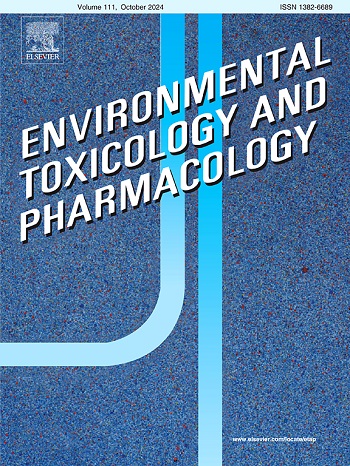Investigating the effects of anthropogenic yttrium contamination: Biochemical alterations in the gills and digestive gland of exposed mussels (Mytilus galloprovincialis)
IF 4.2
3区 环境科学与生态学
Q2 ENVIRONMENTAL SCIENCES
引用次数: 0
Abstract
The rapid growth of electronic waste, including fluorescent lamp waste (FLW), has led to an increase in elements like yttrium (Y) and other rare earth elements (REE) in aquatic environments due to improper waste management. However, there are no guidelines for permissible concentrations of these elements in the environment. This study examines the biochemical impacts of varying Y concentrations (50, 100, and 200 µg L−1), mimicking a FLW discharge, on the gills and digestive gland of Mytilus galloprovincialis exposed for 14 days. Energy reserves, antioxidant and biotransformation enzymes, lipid peroxidation (LPO), and neurotoxicity were measured. Results showed a limited antioxidant capacity in the gills at the highest Y concentration. Additionally, increased LPO levels in both organs suggest oxidative stress-induced damage. The study underscores the need for regulations to address Y contamination and safeguard aquatic ecosystems, proposing a reference value for permissible concentrations based on the observed effects.
求助全文
约1分钟内获得全文
求助全文
来源期刊
CiteScore
7.00
自引率
4.70%
发文量
185
审稿时长
34 days
期刊介绍:
Environmental Toxicology and Pharmacology publishes the results of studies concerning toxic and pharmacological effects of (human and veterinary) drugs and of environmental contaminants in animals and man.
Areas of special interest are: molecular mechanisms of toxicity, biotransformation and toxicokinetics (including toxicokinetic modelling), molecular, biochemical and physiological mechanisms explaining differences in sensitivity between species and individuals, the characterisation of pathophysiological models and mechanisms involved in the development of effects and the identification of biological markers that can be used to study exposure and effects in man and animals.
In addition to full length papers, short communications, full-length reviews and mini-reviews, Environmental Toxicology and Pharmacology will publish in depth assessments of special problem areas. The latter publications may exceed the length of a full length paper three to fourfold. A basic requirement is that the assessments are made under the auspices of international groups of leading experts in the fields concerned. The information examined may either consist of data that were already published, or of new data that were obtained within the framework of collaborative research programmes. Provision is also made for the acceptance of minireviews on (classes of) compounds, toxicities or mechanisms, debating recent advances in rapidly developing fields that fall within the scope of the journal.

 求助内容:
求助内容: 应助结果提醒方式:
应助结果提醒方式:


